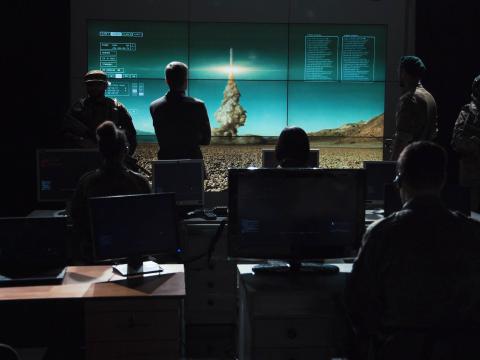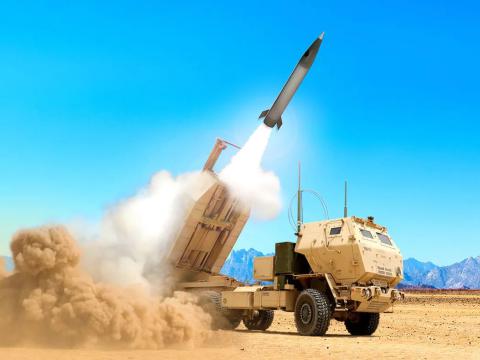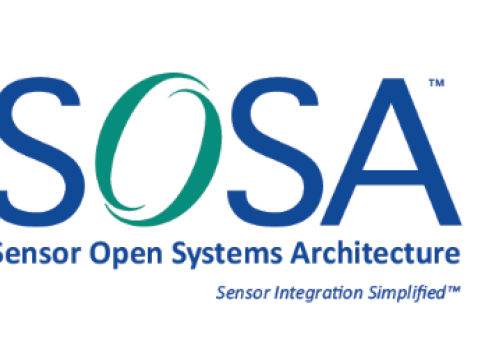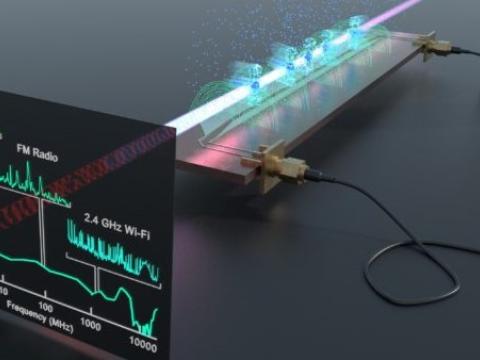Turkish Air Defense Targets Export Market
Command and control technology links variety of sensors, weapons.
Constant upgrades have readied an advanced Turkish air defense system for foreign sales. Developed as Turkey’s first fully digital command and control architecture, the technology interfaces with a variety of sensor and weapons platforms to provide operators with a real-time picture of the battlespace. The system can direct low-, medium- and high-level anti-aircraft systems as part of a layered defense network.
As military forces replace legacy equipment with digital technologies for weapons and sensor systems, it becomes increasingly important to connect these systems into coherent command and control networks. Many nations purchase foreign equipment to meet their defense requirements but have difficulty integrating this disparate hardware. A homogenous system capable of interoperating with diverse legacy materiel would be a valuable export item.
One example of a technology developed to meet legacy needs is the Skywatcher air defense early warning and command and control system. Manufactured by Aselsan Electronic Industries Incorporated, Ankara, Skywatcher was developed through an initiative to modernize the Turkish army’s air defense command and control systems. According to M. Zafer Dokuzoglu, a project leader with Aselsan’s Defense Programs division, after spending the mid-1990s examining foreign-made systems, the Turkish government decided to launch a national program to meet the army’s requirements. In 1999, Aselsan was selected as the main contractor for the program, he says.
Known to the Turkish army as Herikks, the Skywatcher system has four parts: sensor interfaces, an air defense operations center, weapons interfaces and a communications network. Export versions of Skywatcher have the same command and control software for the operations center, but the interfaces for weapons and radar systems are tailored to meet foreign customer requirements, Dokuzoglu explains.
Skywatcher entered service with the Turkish army in 2001 as its first fully digital air defense system. Dokuzoglu notes that the system has been upgraded constantly based on user feedback. These changes are mainly software enhancements for its command, control and communications functions. Initially designed to provide a low-level air defense capability, the system now can integrate with medium- and high-altitude anti-aircraft sensors and weapons.
As a tactical command and control system designed to collect air threat data from various types of radars, Skywatcher can produce a real-time air picture for assigning anti-aircraft weapons. The system consists of air defense command posts at the army, corps and brigade levels; interface units for long-, medium- and short-range air defense radars; and vehicles serving as interfaces to link the command posts to radar sites and weapons platforms. A tactical communications system provides secure voice and datalinks and maintains connectivity between sensors and weapons to minimize target interception time.
The system generates a real-time air picture for operators in the command post by displaying friendly and hostile forces and safe/unsafe air corridors on digital maps. Other screen images include status, availability and coverage data for sensors and weapons systems. A variety of analysis tools can be superimposed over the digital images and used to share data on the network. This information includes unit positions, operational status and equipment information. Matching appropriate weapons to specific targets can be done in an automatic, semi-automatic or manual mode, Dokuzoglu says.
The Tasmus tactical area communications system serves as Skywatcher’s backbone. It carries voice, data and video traffic in a redundant and survivable infrastructure. By using distributed routing algorithms and flexible system architecture upgrades, Aselsan’s engineers have designed a network that can quickly respond to stress or sudden spikes in use, Dokuzoglu explains.
Tasmus has a high-bandwidth capability that links sensors and weapons into Skywatcher’s real-time data tracking capability. Dokuzoglu notes that Skywatcher can be integrated with other communications systems, but the exchange of real-time tracking data will be restricted by the capabilities of the customer’s communications network.
Besides providing real-time sensor and weapons data, Tasmus supports other command features such as priority, pre-emption, and nonsecure warning functions. It has a network management and planning system called Syscon that uses International Telecommunications Union and NATO tactical communications system control protocols. The software architecture is designed along NATO multilevel security standards, and the system allows tactical data servers to connect to Tasmus, providing commanders with digital maps, geographic data, meteorological information, intelligence reports and logistics data.
Tasmus uses asynchronous transfer mode technology in the system’s communications nodes to link switches. This architecture also allows the system to provide users with distinctive services, Dokuzoglu says. The system uses integrated services digital network (ISDN) technology in its access switches to support integrated services for simultaneous voice and data communications such as Internet protocol, short message service, video and videoconferencing. These services support Skywatcher personnel using tactical ISDN terminals.
Skywatcher and Tasmus are two of several digital systems in the Turkish army. These include the Baiks and Baiks-2000 field artillery battery fire direction systems. Baiks is designed to provide fast and accurate ballistic calculations for a variety of artillery weapons, fire support coordination systems, digital message transfer applications and battery-level ammunition counts. Baiks-2000 is an updated version that increases an artillery battery’s firepower and first-hit capability.
Dokuzoglu notes that digitalization, an ongoing process in the Turkish military, is reflected through systems such as Herikks, Baiks and Tasmus. Another Aselsan product is a tactical data/Internet communications unit called VIA that is designed to link tactical data terminals and computers operating on legacy combat radio networks. VIA has a modem-type interface for computers using command and control systems and is designed to form a seamless communications network between connected computers, even under changing battlefield and electronic warfare conditions, he says.
Web Resources
Aselsan Electronic Industries Incorporated: www.aselsan.com.tr/ashomeen.htm




Comments